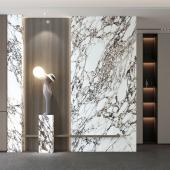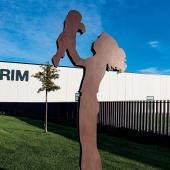System Electronics launches a new production hub
System Electronics, the System Ceramics business unit specialising in industrial electronics, recently opened a new state-of-the-art production facility. The goal is to make it an international centre of excellence.
The new production site of System Electronics, the business unit specialising in industrial electronics with operations spanning sectors from automotive, aerospace and aviation through to infomobility, ceramics and intralogistics, was recently built in the System Ceramics industrial area in Fiorano Modenese.
Over the years, System Electronics has established itself as a highly reputed supplier of innovative solutions to the world of automation. It is particularly well known for its Copilot industrial PCs, stepper motor drives and powerful processors, including the new CoreXpress which exploits fast and immediately available memory to significantly boost performance.
Thanks to the new facility, the division is now able to increase production with a range of cutting-edge machinery, including an SMT line with convection oven and 3D optical inspection; an SMT line with vapour phase oven and 3D optical inspection; two selective wave soldering lines; an X-Ray Tri line for tomographic X-ray control; a laser marker line for marking printed circuit boards with QR codes for product tracking; a conformal coating line for the application of protective coatings to circuit boards; circuit board washing machines; a machine for separating circuit boards produced in multiple panels; an X-ray machine for counting components. The facility is also equipped with an EMC laboratory with anechoic chamber for radiofrequency tests, making it one of the few research centres with equipment of this kind for performing electromagnetic compatibility tests.
The architecture of the new building is consistent with the entire complex where the System Ceramics headquarters is located. With its linear volumes, well-balanced proportions and clearly recognisable envelope, it conveys values of innovation, transparency and cutting-edge technology.
The façades have a repetitive, abstract modular design consisting of an alternation of white porcelain tiles and large blue windows that allow natural light to enter the work areas. Last but not least, the operational areas are interconnected by carefully landscaped and well-lit outdoor spaces that make the complex an outstanding example of industrial conversion.
Did you find this article useful?
Join the CWW community to receive the most important news from the global ceramic industry every two weeks





















